Hostas are one of those versatile plants that are few and far in between. These shade-loving perennials are herbaceous plants, mostly grown for their foliage. But you might be wondering if they can be transplanted. Great question! We have researched the answer for you plus more.
Yes, hostas can be transplanted. However, you want to wait until the spring when the ground starts to thaw. For example, during the winter, hostas are dormant. If you attempt to transplant them during this season, they will not survive.
This might lead to other questions like how do I care for my hosta plants? Or, how do I transplant my hosta? And even, what are the best companion plants for hostas? Continue reading for the answers to these questions and more!
![Beautiful green and healthy hostas in the garden, Can Hostas Be Transplanted? [Inc. In Fall, Winter, Spring, Or Summer]](https://gardentabs.com/wp-content/uploads/2022/09/Can-Hostas-Be-Transplanted-Inc.-In-Fall-Winter-Spring-Or-Summer-Pin-683x1024.jpg)
Can Hostas Be Transplanted?
Hostas do extremely well being divided and transplanted. In fact, many people do this every season to give to friends and family. It is also a great way to grow your garden for free with a little elbow grease.
![Beautiful green and healthy hostas in the garden, Can Hostas Be Transplanted? [Inc. In Fall, Winter, Spring, Or Summer]](https://gardentabs.com/wp-content/uploads/2022/09/Can-Hostas-Be-Transplanted-Inc.-In-Fall-Winter-Spring-Or-Summer.png)
The best time to transplant hostas is in the early spring. Additionally, transplanting on a cool, overcast day is best, as the hot sun can wilt the leaves easily. Not to mention it is harder on you to transplant in the heat of the day.
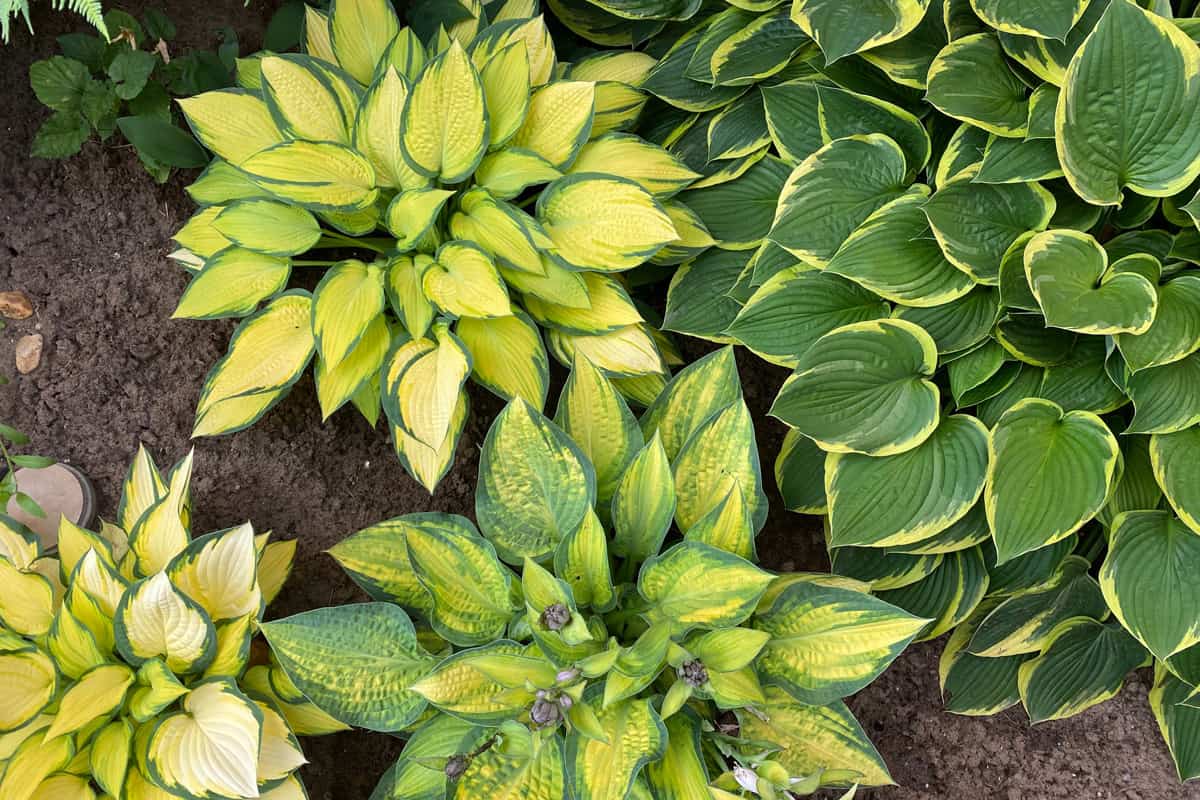
How To Transplant Hostas
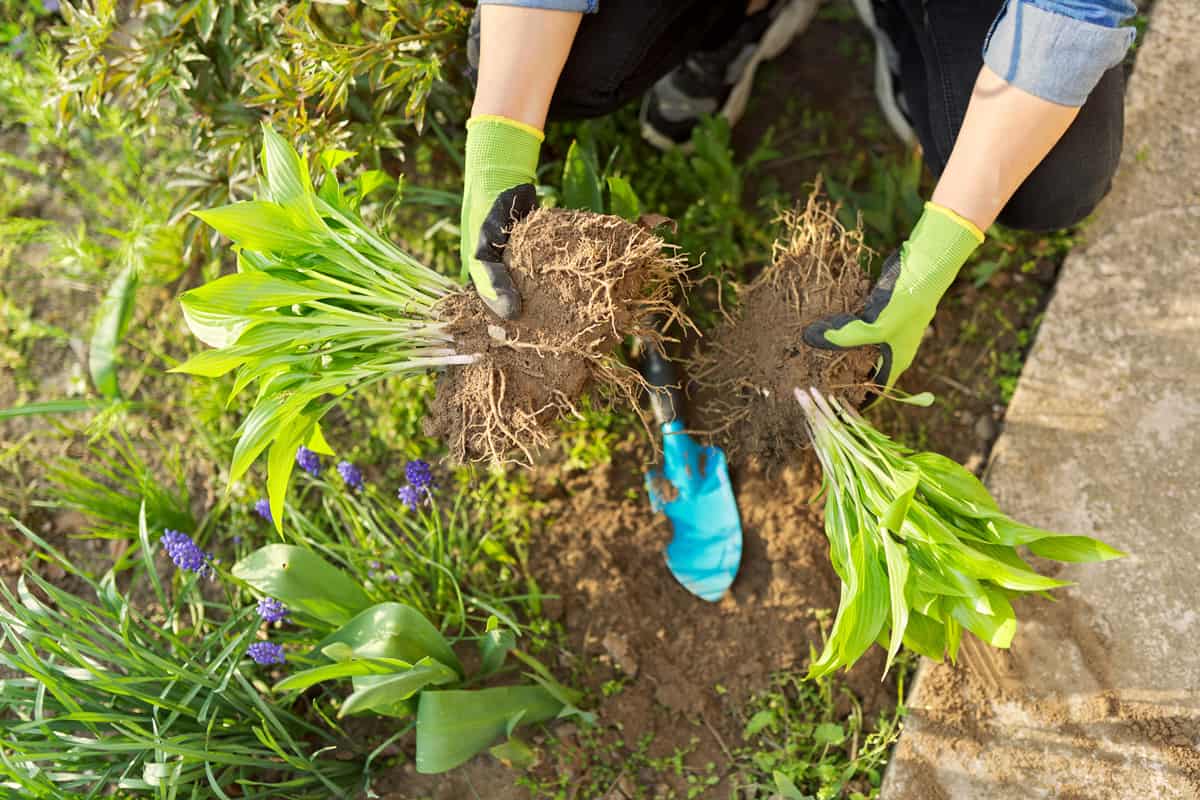
There are some simple but important steps you need to take to transplant your hostas. The last thing you would want is to attempt to transplant but be unsuccessful. Killing your old plant or not establishing your new plant well enough would be a major bummer!
1. Plan
First, plan out where you want to plant your new hosta once it's divided. Make sure it's a great area for shade to partial shade. Pre-prepare a mixture of soil for the new plant with a slow-release fertilizer.
2. Dig
Now that you have a home planned out for your new bulb, it's time to do some digging. Gently dig around the hosta to loosen the dirt. Make sure you dig deep and wide enough to get the root ball.
3. Divide
Once the dirt is loose enough, gently lift the hosta out of the hole and place it on the ground. Using a pruning tool, or shears, divide the bulbs and set them aside.
It is a good idea to have a wheelbarrow or tarp on hand to transfer your bulbs to the new planting site; hosta bulbs can be heavy!
Click here to see these pruning shears on Amazon.
4. Replant
Put your old hosta safely back in its home, and fill it with soil and fertilizer. Water thoroughly.
5. Transplant
Now that your original hosta is tucked back in, plant your baby bulbs in your fertilizer and soil mixture. Water thoroughly. The new plant will need to be watered every couple of days to ensure the roots take hold.
How To Care For Hostas
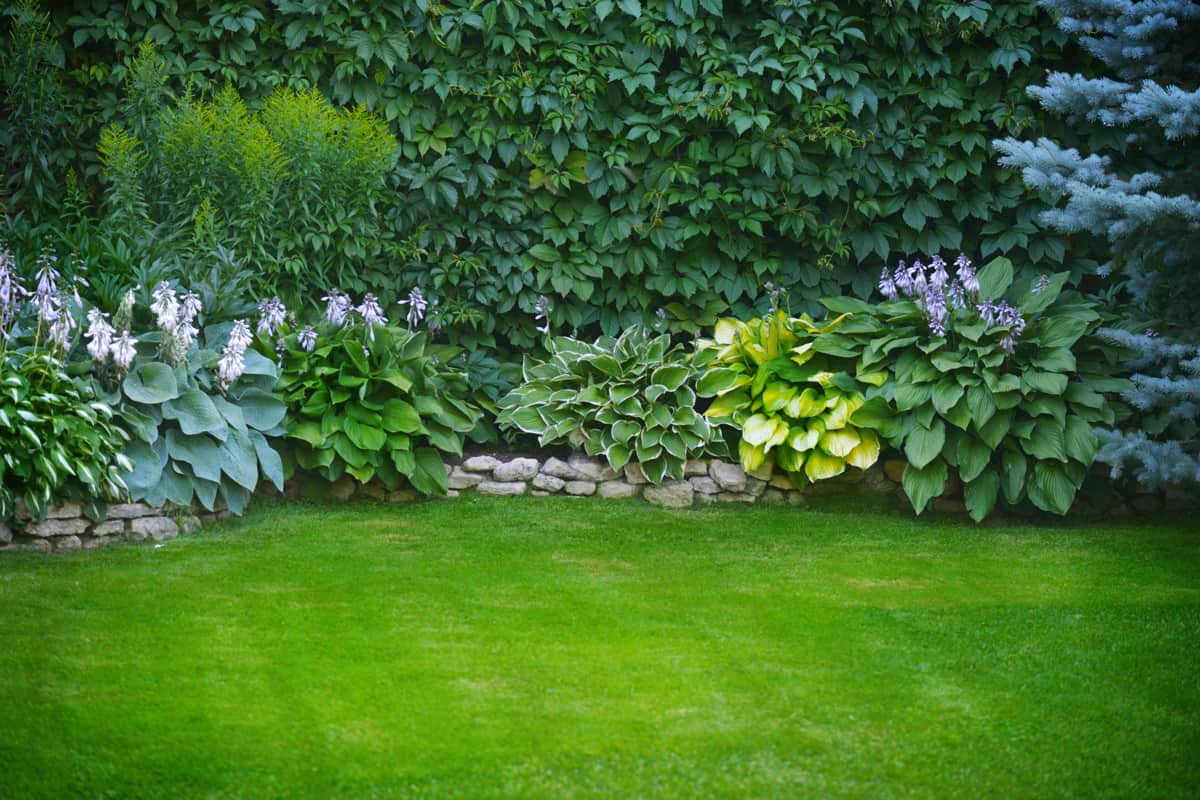
Hostas are hardy plants, but they still need some TLC to thrive. Let's dig into the sun, soil, and water requirements of our beloved hostas.
Sun
Avoid sunny spots for your shade-loving hosta. Ideally, they would receive a little morning sun and mostly shade in the afternoon; too much sun can wilt and crisp the leaves until they turn brown and die.
Soil
Moist, well-drained soil is a must for hostas. Mix in organic matter, compost, and fertilizer to give your soil a powerful punch! Coffee grounds are a great natural and free option for fertilizer. A slow-release 10-10-10 fertilizer will also do the trick.
Water
Water and water some more! Hostas love water. They need about one inch per week, deeply watered, to survive the summer heat.
Click here to see these hosta bulbs on Amazon.
What Are The Best Companion Plants For Hostas?
Normally, hostas are used as filler plants in gardens, borders, and pathways. They have a mounding effect and spread easily. Most people like to plant their hostas with a companion to create contrast and diversity in their gardens. Let's discuss hostas' top five companion plants.
Impatiens
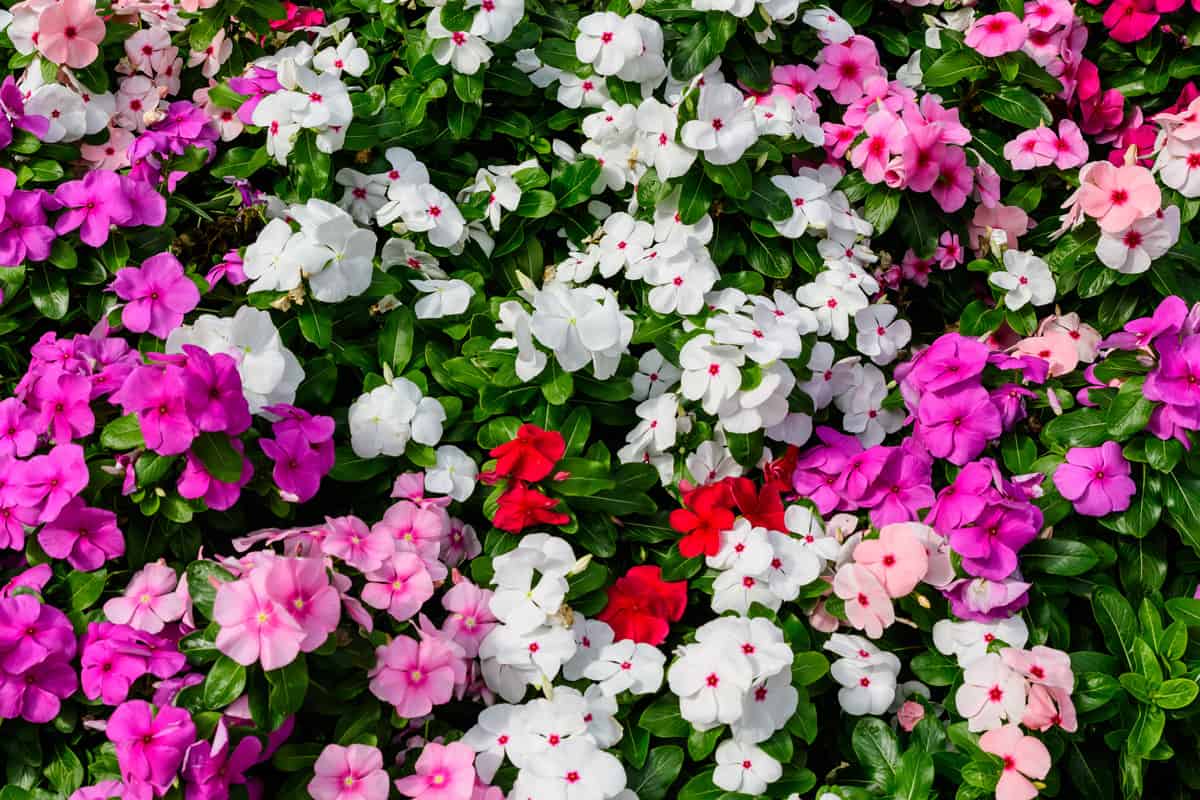
Impatiens are shade lovers, just like hostas. They come in shades of pink, purple, orange, red, and white. Known for their vibrant flowers that bloom all season long, they look lovely next to hostas' green foliage.
Although they are technically perennial plants in USDA Hardiness Zones 10 and 11, they are normally grown as an annual in other climates. Make sure to pinch back the stems once the blooms are spent to create more growth.
Coral Bells
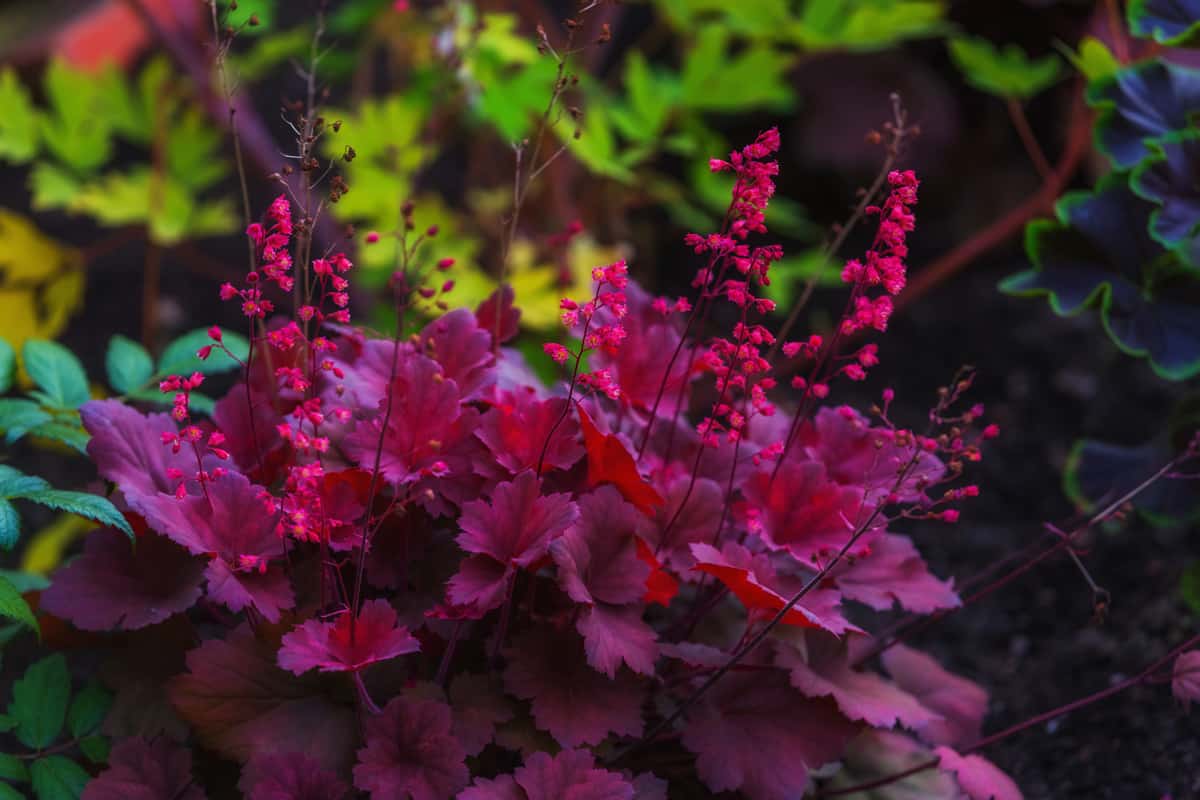
Coral bells have a lot of the same requirements as hostas. They prefer full to partial shade with moist, well-drained soil. Coral bells grow in clusters that look great next to hostas along a border.
Coral bells are short-lived perennials lasting around two years, while Hostas can live up to 50 years! Keep that in mind when planting these two together. But, don't worry! After your coral bells die out, there are plenty of other companion plants for your hostas.
Bleeding Heart
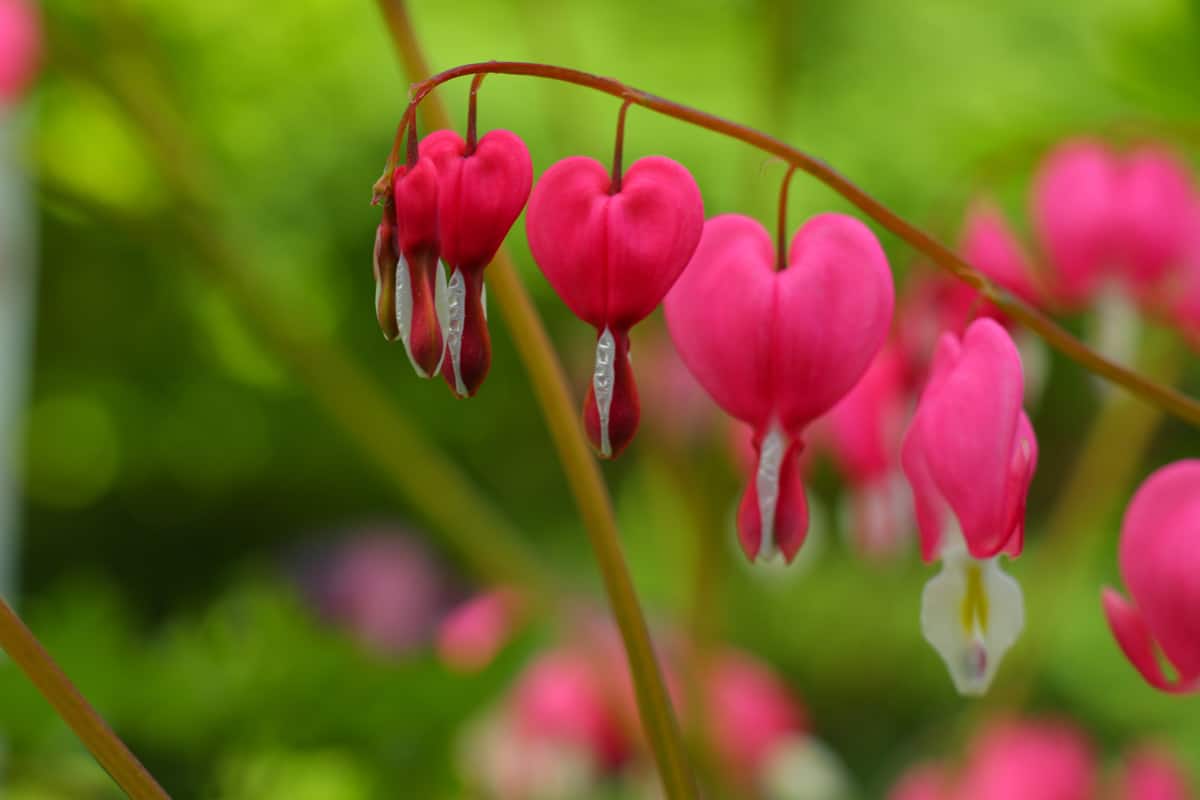
Bleeding hearts are a unique flower! They have fluffy, heart-shaped flowers in hues of pink and red. They are full-shade perennials that love a wet environment. You can water your bleeding hearts and hostas on the same schedule.
If bleeding hearts get too much sun, their flowers will wilt until the next growing season. In fact, they are such delicate flowers that too much sun, wind, or rain can cause them issues. Hardy hostas are the perfect protector for these romantic flowers.
Creeping Jenny
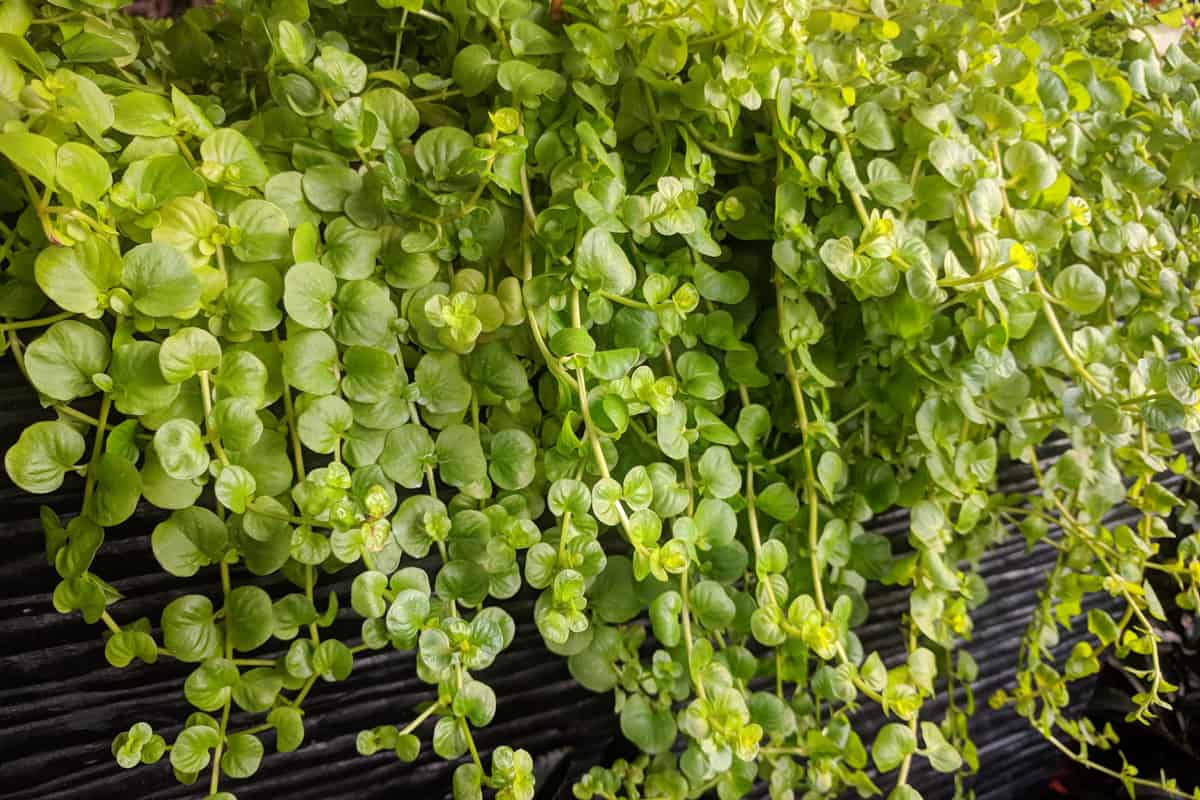
Creeping Jenny gets its name from its creeping tendencies. It is a fast-growing perennial that is a groundcover and is considered an invasive plant. So gardener beware, creeping Jenny could choke out other plants. However, hostas are hardy enough to be planted next to this creeper.
Creeping Jenny likes partial shade and moist soil. Too much heat and their leaves will scorch and turn brown. They especially look fantastic draping over walls and garden beds.
Ferns
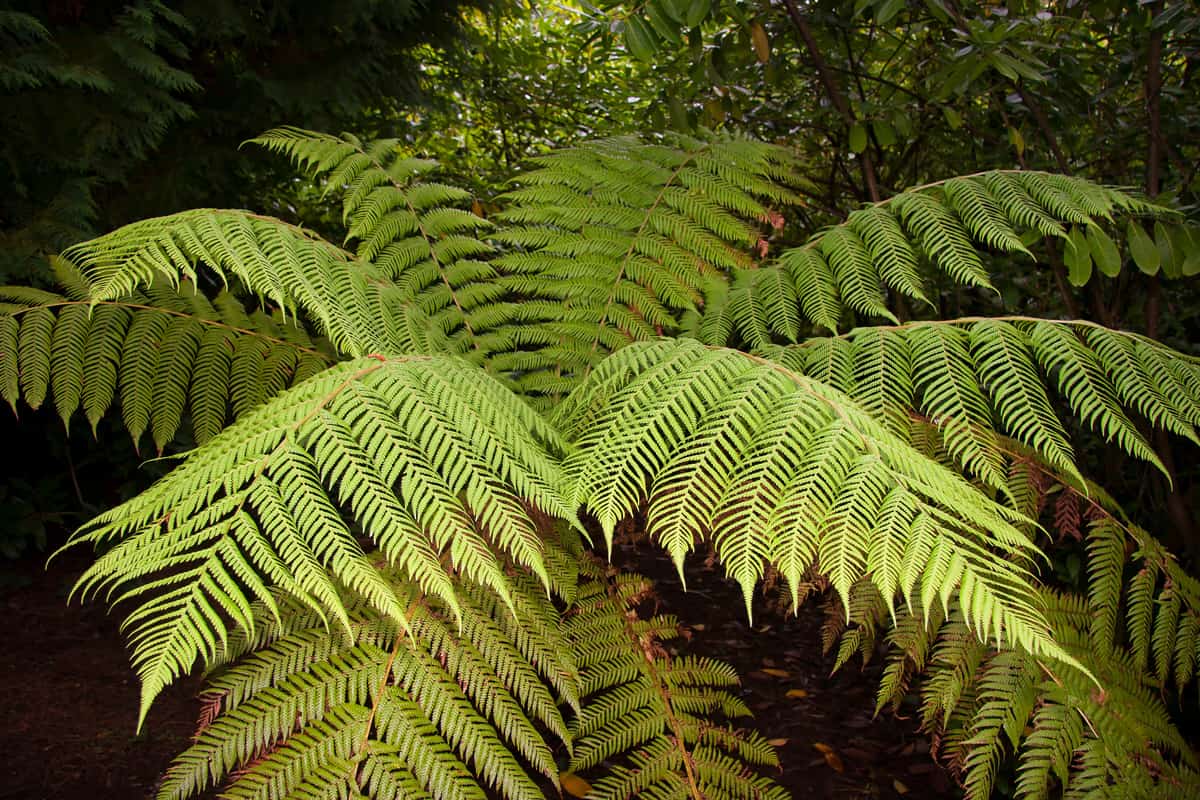
Ferns do well with shade to partial sun. They will come back year after year and are grown for their large and textured leaves. Ferns are sure to make a statement wherever you plant them!
They grow two to three feet tall and 18 to 24 inches wide. Along with their shade preferences, they also love to be watered deeply and often. Hostas and ferns are two peas in a pod!
Are Hostas Invasive?
Hostas are not considered invasive plants. However, they do spread easily and stick around for a long time. Hostas can take up to seven years to fully mature, so expect them to grow in size each year.
Can Hostas Be Houseplants?
Absolutely! Hostas do well inside in the right conditions. Avoid setting your hostas next to a south-facing window with a lot of sunlight. They will need filtered sunlight and ample water. Houseplants can tend to dry out quicker than the soil outside; check the water every couple of days and water as needed.
How To Overwinter Hostas
It's a great idea to prepare your hostas for harsh winters. This ensures a thriving plant next season. Here are some tips on how to overwinter your hostas:
Tip 1: Prune
Prune your hostas in the fall before the first frost. Cut them back and remove any dead leaves. This will promote new growth the following spring.
Tip 2: Protect
Protect your hostas by putting a layer of mulch around the plant. Mulch will protect your plant from the harsh winter. Although, regardless of harsh winters, your hostas will survive.
Wrapping It Up
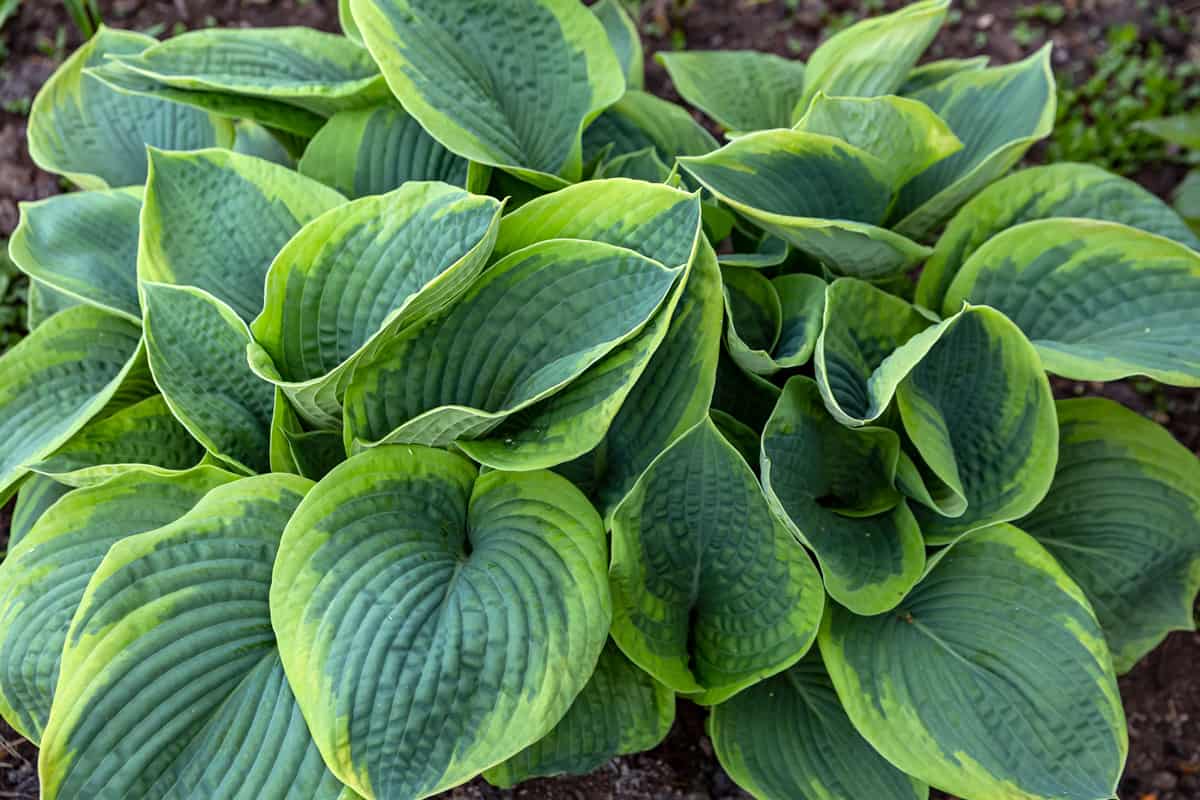
All around, hostas are versatile plants for numerous reasons. As we know, hostas can be transplanted easily with some tips and tricks. Just remember to wait until spring and handle with care when transplanting.
Made it to the end? Check out these helpful and related articles below:
How To Get Rid Of Hostas From Your Yard?
How Long Do Hostas Take To Grow? [Inc. From Bare Root, Bulb, Or Seed]


